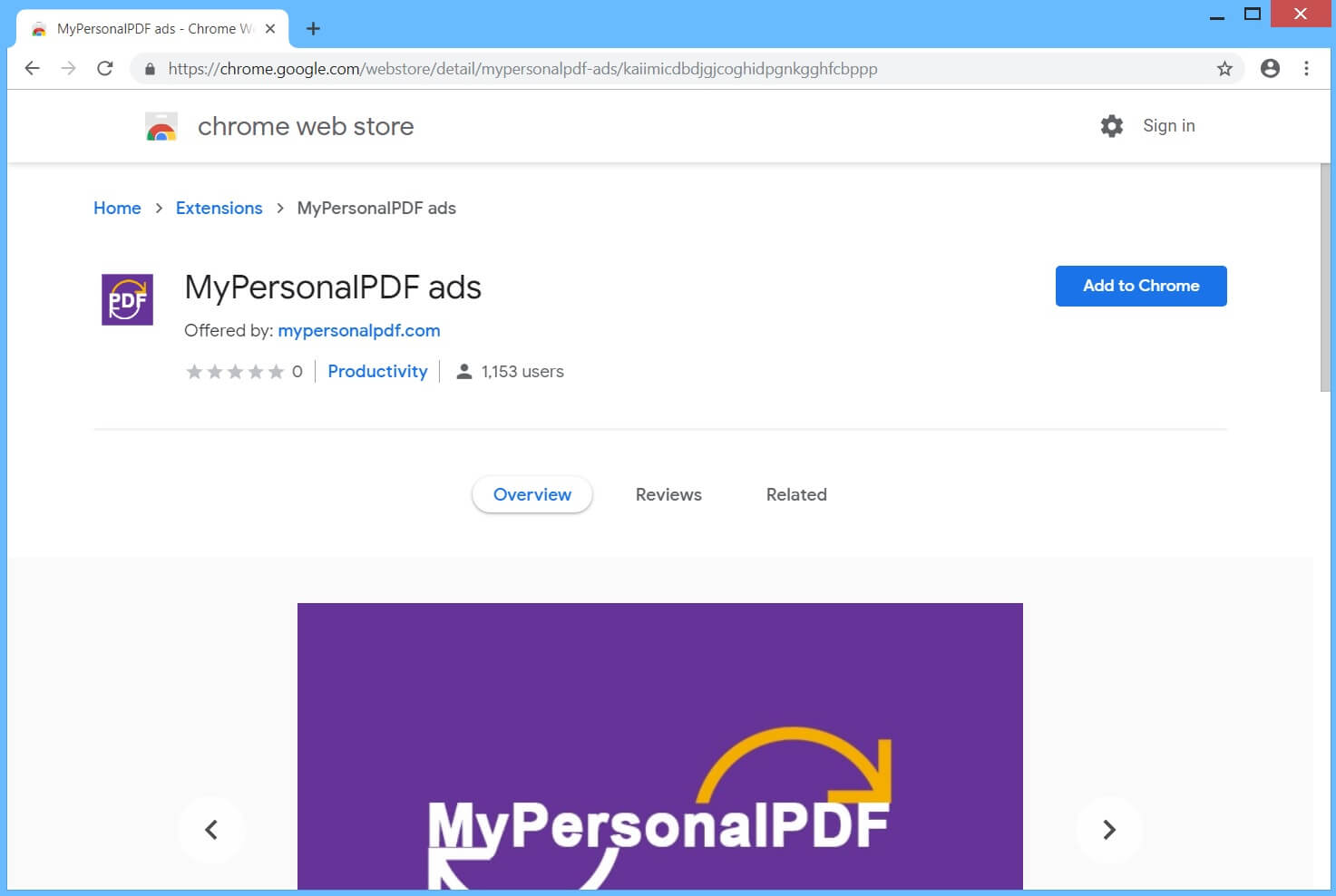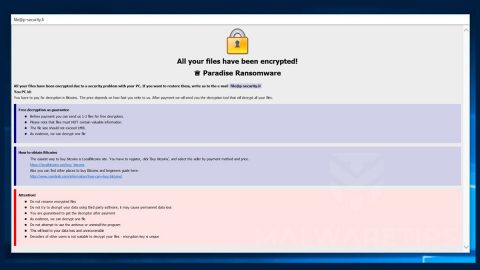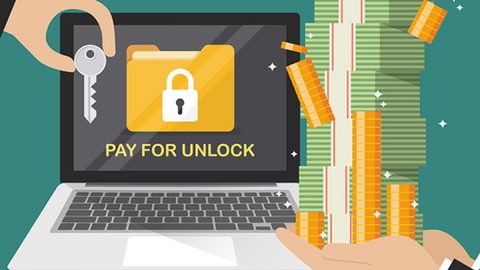What is MyPersonalPDF? And how does it function?
MyPersonalPDF is a browser extension that supposedly allows users a free, quick, and easy way to convert Word, Excel, PowerPoint, and other files to PDF format. Although it may seem like a useful program that could solve your concerns in converting several file formats to PDF, it’s actually a browser hijacker that could hijack your browser’s settings and change them without your permission.

Once installed, MyPersonalPDF will quickly modify the default settings of your browser such as the default homepage, new tab page, and search provider. As a result, you will see MyPersonalPDF each time you open your browser. You will also notice new and suspicious browser toolbars and add-ons related to this browser hijacker. Not only that as you will also see tons of ads like banners, in-text links, pop-ups, and so on. These kinds of activities are stated on the official website of MyPersonalPDF.
- “Mypersonalpdf offers pdf converter in exchange for an agreement to install our software and receive advertising.”
- “Advertising can be served through either in-text, pop-up/under, transitional, shopping and/or banner ads.”
- “Ads served by Mypersonalpdf will always show the Mypersonalpdf brand and are clickable.”
As you can see, even though MyPersonalPDF may be useful on converting files to PDF format, using it also comes with many risks as this browser hijacker can also monitor all your browsing activities in order to gather browsing data like search queries, browser type, links you’ve clicked, and many more.
How is MyPersonalPDF distributed over the web?
MyPersonalPDF is distributed on its official websites as well as in the Chrome Web Store. Moreover, it also uses a shady technique called software bundling which is commonly used by other browser hijacker developers. In other words, MyPersonalPDF can also be found on software bundles. Along with other browser hijackers and unwanted programs, MyPersonalPDF is added as one of the extra programs in software bundles. To avoid installing such programs, you must always opt for the Advanced or Custom setup instead of the standard one.
Make sure to follow the removal instructions provided below to delete MyPersonalPDF from your browser and computer.
Step_1: You need to close the browser infected with the browser hijacker. And if you can’t close it manually, you can close it using the Task Manager instead. Tap the Ctrl + Shift + Esc keys and open the Task Manager.
Step_2: Next, look for the process of your browser, right-click on it and select End task or End process to close it.
Step_3: Afterwards, tap the Win + R keys to open the Run dialog box and type “appwiz.cpl” in the field and press Enter to open the Programs and Features in Control Panel.
Step_4: From the list of programs installed, look for any programs that could be related to MyPersonalPDF or any suspicious program you don’t remember installing under the list of installed programs, and once you’ve found it, uninstall it.
Step_5: Edit your Hosts File.
- Tap the Win + R keys to open then type in %WinDir% and then click OK.
- Go to System32/drivers/etc.
- Open the hosts file using Notepad.
- Delete all the entries that contain MyPersonalPDF.
- After that, save the changes you’ve made and close the file.
Step_6: Now you have to flush the DNS cache of your computer. To do so, right-click on the Start button and click on Command Prompt (administrator). From there, type the “ipconfig /flushdns” command and hit Enter to flush the DNS.
Step_7: After that, restart your computer and then open your browsers and reset them back to their default state.
Google Chrome
- Open Google Chrome, then tap the Alt + F keys.
- After that, click on Settings.
- Next, scroll down until you see the Advanced option, once you see it, click on it.
- After clicking the Advanced option, go to the “Restore and clean up option and click on the “Restore settings to their original defaults” option to reset Google Chrome.
- Now restart Google Chrome.
Mozilla Firefox
- Open Mozilla Firefox and tap Ctrl + Shift + A to access the Add-ons Manager.
- In the Extensions menu Remove the unwanted extension.
- Restart the browser and tap keys Alt + T.
- Select Options and then move to the General menu.
- Overwrite the URL in the Home Page section and then restart the browser.
Internet Explorer
- Launch Internet Explorer.
- Next, click the wrench icon for Settings.
- Then click Internet Options.
- After that, go to the Advanced tab.
- From there, click the Reset button. This will reset Internet Explorer’s settings to their default condition.
- Now click OK to save the changes made.
- Restart your computer.
Step_8: Hold down Windows + E keys simultaneously to open File Explorer.
Step_9: Navigate to the following directories and look for suspicious files associated with the browser hijacker such as the software bundle it came with and delete it/them.
- %USERPROFILE%\Downloads
- %USERPROFILE%\Desktop
- %TEMP%
Step_10: Close the File Explorer and empty the contents of Recycle Bin.
Congratulations, you have just removed MyPersonalPDF Browser Hijacker in Windows 10 all by yourself. If you would like to read more helpful articles and tips about various software and hardware visit fixmypcfree.com daily.
Now that’s how you remove MyPersonalPDF Browser Hijacker in Windows 10 on a computer. On the other hand, if your computer is going through some system-related issues that have to get fixed, there is a one-click solution known as Restoro you could check out to resolve them.
This program is a useful tool that could repair corrupted registries and optimize your PC’s overall performance. Aside from that, it also cleans out your computer for any junk or corrupted files that help you eliminate any unwanted files from your system. This is basically a solution that’s within your grasp with just a click. It’s easy to use as it is user-friendly. For a complete set of instructions in downloading and using it, refer to the steps below
Perform a full system scan using Restoro. To do so, follow the instructions below.













